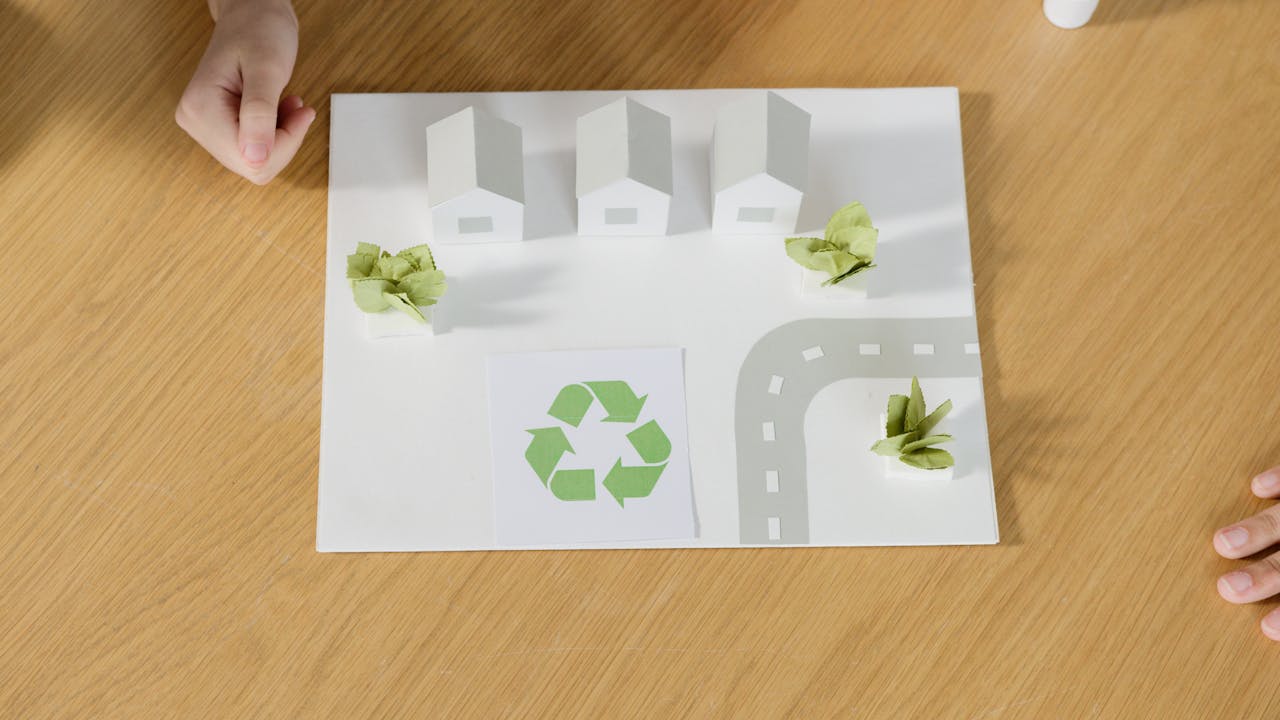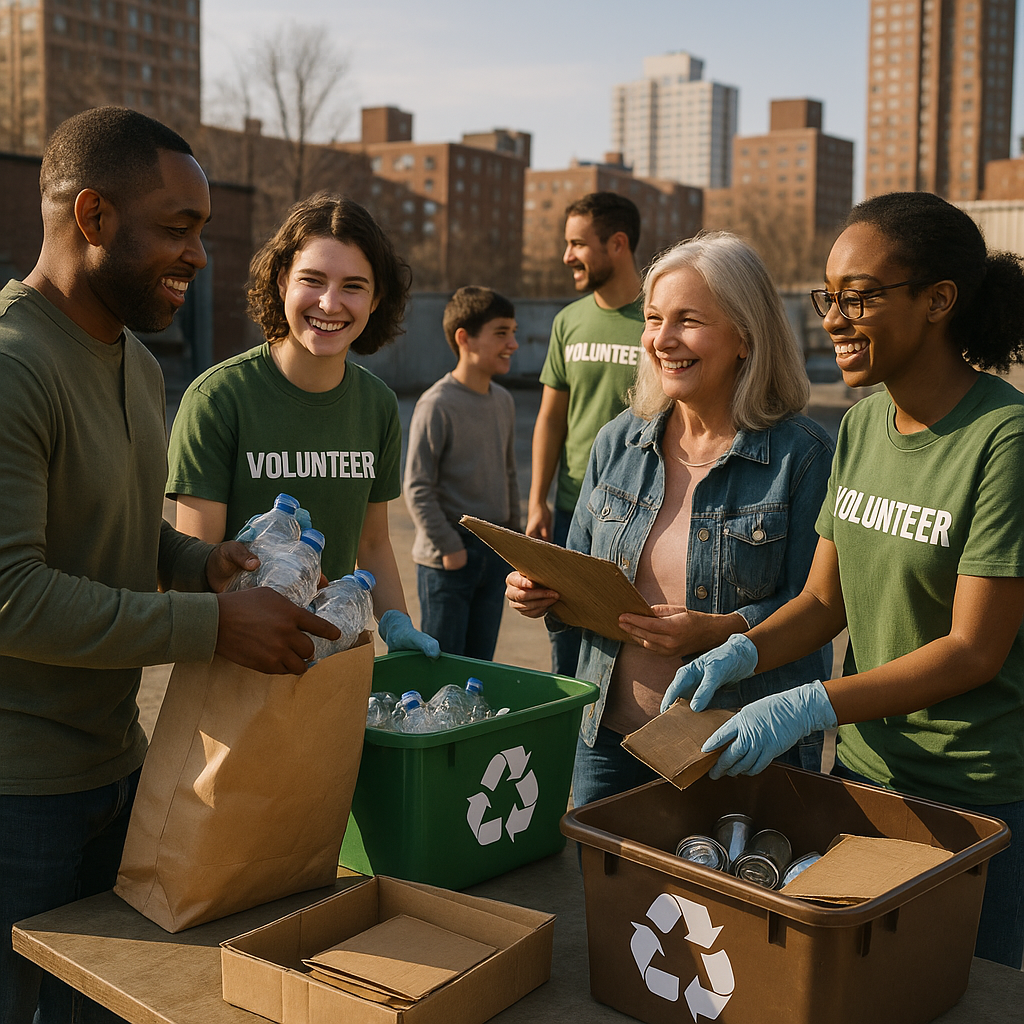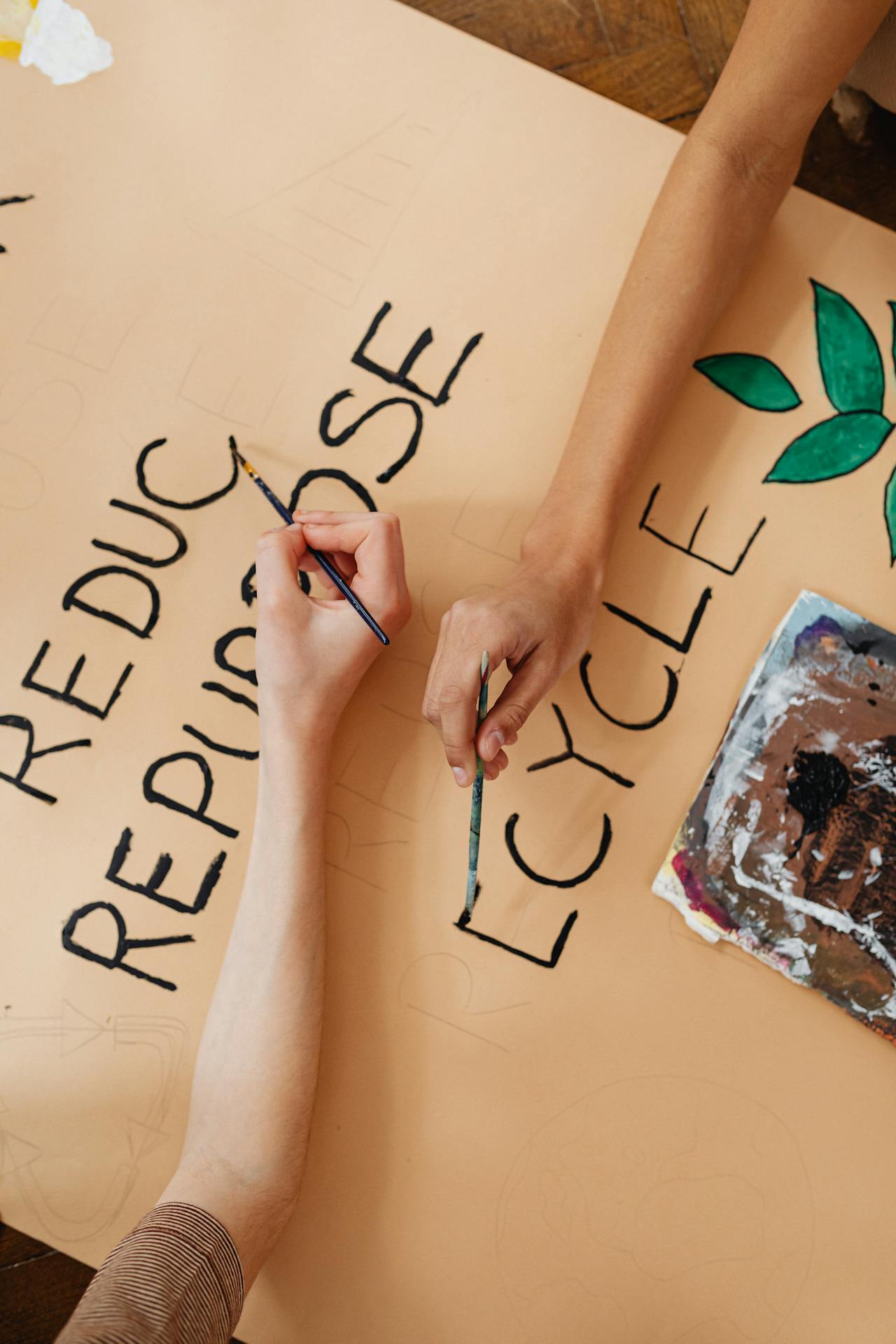5901 Botham Jean Blvd, Dallas, TX 75215
What Are Scrap Recycling Partnerships?
June 22, 2025Scrap recycling partnerships unite businesses, community organizations, and local governments to develop effective waste management solutions. These collaborations leverage diverse resources and expertise to address recycling challenges beyond the capacity of a single entity. Fundamentally, these partnerships aim to transform discarded metals and materials into valuable resources.
Local companies bring operational expertise and market access, while environmental organizations offer specialized knowledge and community trust. Government entities provide infrastructure, funding, and policy support. This strategic blend of strengths results in recycling programs with a far greater impact than isolated efforts.
The strength of these partnerships is evident in their ability to revolutionize community approaches to materials recovery. When businesses share collection equipment, nonprofits lead education campaigns, and municipalities simplify regulations, recycling rates can increase significantly. Communities with effective partnerships often see metal recycling rates rise from below 30% to over 60% within a few years.
What are the Key Benefits of Scrap Recycling Partnerships?

Scrap recycling partnerships offer significant advantages to both communities and businesses. These collaborations transform discarded materials into valuable resources while strengthening community ties. Here are the major benefits these partnerships provide.
Resource Sharing and Cost Efficiency
One immediate benefit of scrap recycling partnerships is the efficient allocation of resources. Collaboration allows participants to share costs, equipment, and expertise. This is particularly valuable for smaller communities with limited budgets that could not afford specialized recycling equipment independently.
Some communities report up to 30% savings on waste management expenses by redirecting recyclable materials through partnerships instead of standard waste removal channels. The collective logistics network created through these partnerships enables more efficient collection and processing systems.
Technical expertise from the recycling industry helps communities implement more effective collection systems. When businesses and local governments pool their resources, they can share transportation fleets and processing facilities, reducing individual operational costs while maximizing material recovery.
Enhanced Educational Outreach
Nonprofit partnerships are crucial in community education and engagement. These organizations bridge the gap between recycling operations and public understanding through targeted outreach programs, helping residents understand what materials can be recycled and how to prepare them properly.
Educational workshops provide essential knowledge about proper material preparation and sorting techniques. Schools are excellent partners for recycling education, as students often bring environmental knowledge home and influence family behaviors. Some communities offer school supplies funded through recycling proceeds, creating a direct link between environmental action and educational advancement.
Clear, accessible educational materials significantly improve program understanding and participation. Visual guides and simple language enhance comprehension across educational levels, helping ensure that recyclable materials are properly sorted.
Increased Community Engagement
Community engagement strategies developed through partnerships foster a sense of ownership among residents. When people understand the economic and environmental benefits of scrap recycling, they become active participants rather than passive observers.
Environmental organizations bring established community connections and communication channels that effectively spread awareness beyond government messaging alone. Regular updates about program achievements motivate continued participation by demonstrating the tangible value of community involvement.
Creative incentives like community improvement projects funded by recycling proceeds make the benefits visible. When residents see recycling funds supporting new playground equipment or community gardens, they develop stronger connections to the program and are more likely to participate.
Innovation Through Diverse Perspectives
Partnerships foster innovation by uniting stakeholders with different expertise and viewpoints. Industry partners introduce cutting-edge technology and market insights. Environmental groups identify emerging sustainability challenges. Local governments understand community needs and limitations. This diverse input encourages creative solutions that no single entity could develop alone.
The collaborative approach enhances adaptability to changing conditions. Recycling markets fluctuate rapidly, and regulations evolve constantly. Through partnerships, community scrap programs can quickly respond to these changes with strategies that remain economically viable while meeting environmental goals.
These innovative frameworks also help address complex challenges like contamination in recycling streams. When industry experts, environmental educators, and government officials work together, they can develop comprehensive approaches to improving material quality and program efficiency.
Economic Development Opportunities
Scrap recycling partnerships create jobs and stimulate local economies. The RecyclePartner Initiative in Greenville demonstrates this potential, having generated over $450,000 in revenue for community sustainability projects within just two years of implementation.
These partnerships enable the creation of circular economies where materials maintain their value through ongoing reuse. Businesses involved in recycling partnerships can leverage their participation for authentic marketing opportunities, appealing to environmentally conscious consumers.
When communities establish strong scrap recycling frameworks, they also become more attractive to businesses prioritizing sustainability. The economic benefits extend beyond direct revenue to include workforce development and the creation of new green business opportunities.
| Economic Benefits | Environmental Benefits |
|---|---|
| Revenue generation ($450,000+ in Greenville case study) | Reduced landfill waste (up to 25% increase in recycling rates) |
| Job creation in collection, processing, and manufacturing | Conservation of natural resources through reduced mining |
| Reduced capital investment through shared equipment | Protection against contamination and leachate formation |
| Lower operating costs through economies of scale | Reduction in greenhouse gas emissions |
| Cost-effective production for businesses using recycled materials | Decreased energy consumption (up to 95% for aluminum) |
| Enhanced funding opportunities through partnership grants | Reduced air and water pollution (86% and 76% respectively) |
| Improved supply chain management | Support for circular economy principles |
The benefits of scrap recycling partnerships go far beyond simple waste reduction. By bringing together diverse stakeholders with complementary strengths, these collaborations create sustainable systems that serve environmental, educational, economic, and social purposes. They transform what was once considered waste into valuable community assets while building stronger connections between residents, businesses, and local institutions.
How Do Scrap Recycling Partnerships Increase Community Participation?

Nonprofit organizations bridge recycling operations with communities, using targeted educational programs to teach residents about recyclable materials and proper preparation. Their community outreach expertise reduces contamination rates and boosts local recycling participation.
Partnerships create incentive programs to encourage community involvement. Financial rewards direct recycling proceeds to visible community improvements, rather than individual payouts. When residents see recycling funds transforming into playgrounds or community gardens, they feel more connected to the program.
Recognition-based incentives tap into social motivations. Public acknowledgment of recycling champions through local media creates role models within neighborhoods. Monthly recognition programs with awards for top contributors maintain engagement and encourage friendly competition between community groups.
Schools are crucial to successful scrap recycling partnerships. When local schools integrate recycling into their curriculum, students bring this knowledge home, influencing family behaviors. Some communities offer school supplies or scholarships funded by recycling proceeds, linking environmental action to educational advancement.
Strategically placed collection points improve accessibility and participation. Drop-off locations in high-traffic areas like community centers, school parking lots, and shopping centers make recycling convenient. Each location should have clear signage explaining acceptable materials and preparation requirements.
Digital tools extend the reach of community partnerships. Mobile apps with features like collection day reminders eliminate confusion about pickup schedules. Location-based services direct residents to specialized drop-off points for items like e-waste, reducing participation barriers and making recycling education more accessible.
Successful partnerships prioritize data collection to measure impact and improve strategies. Tracking participation rates across neighborhoods identifies areas needing additional outreach. Monitoring contamination levels evaluates educational campaigns’ effectiveness and helps partners allocate resources for maximum impact.
Community clean-up events generate visible results that reinforce positive recycling behaviors. These gatherings provide opportunities for neighbors to work together toward shared environmental goals. Combined with educational components about proper waste sorting, these events turn a chore into a social occasion.
The most effective partnerships maintain transparent communication about program achievements. Sharing progress metrics with community members builds trust and demonstrates impact. When residents see tangible benefits, such as reduced landfill waste or funds for community projects, ongoing participation becomes more meaningful.
Strong collaborative frameworks clarify stakeholder roles and responsibilities. Local businesses might provide logistics support for collecting recyclables. Community centers serve as education and engagement hubs, while government entities offer policy support and infrastructure. This clear division of labor maximizes partnership efficiency and effectiveness.
By combining these strategies, scrap recycling partnerships create sustainable systems that transform occasional recyclers into dedicated environmental stewards. The collaborative approach fosters community ownership while delivering significant environmental and economic benefits to participating neighborhoods.
| Incentive Type | Description | Benefits | Implementation Examples |
|---|---|---|---|
| Financial Rewards | Discounts on utility bills, gift cards, or proceeds directed to community projects | 30% increase in recycling rates, creates visible community benefits | Discounts at local stores, funding for playground equipment |
| Recognition-Based | Public acknowledgment of recycling champions through local media and events | Creates visible role models, fosters community pride | Monthly “Top Recyclers” features, appreciation ceremonies with certificates |
| Educational Incentives | Scholarships, school supplies, or educational programs funded through recycling | Connects recycling to community improvement, influences family behavior | School supply rewards, field trips funded by recycling proceeds |
| Community Challenges | Competitions between neighborhoods with leaderboards and goals | 20-30% increase in recycling rates, 50% more household participation | Seasonal competitions, community-wide recycling targets |
| Point-Based Systems | Participants earn points for recycling activities redeemable for rewards | 25-30% increase in participation within first year | Points for proper sorting, attending workshops |
| Digital Engagement | Apps and platforms for tracking recycling achievements | 25% growth in long-term participation compared to non-digital methods | Scanning recyclables, real-time feedback on habits |
What is the Role of Industry in Scrap Recycling Partnerships?

Industry partners are essential to successful scrap recycling partnerships. Their operational expertise fills critical knowledge gaps that many local governments and community organizations face when establishing recycling programs. These industry experts understand material sorting requirements, processing limitations, and quality control measures essential for turning waste into marketable commodities.
Market access is one of the industry’s most valuable contributions to recycling partnerships. Companies with established connections to material buyers ensure collected scrap reaches end markets where it becomes new products. Without these market relationships, even well-collected materials might lack viable destinations, undermining program sustainability.
Infrastructure investment by industry partners often makes the difference between theoretical and actual recycling success. Many communities lack the capital resources to purchase specialized equipment for processing scrap metal, plastics, or electronic waste. When industry provides this technology, recycling becomes feasible at a scale that serves entire regions.
Technology Innovations That Transform Collection
Industry brings cutting-edge technology to recycling partnerships, transforming how materials are collected and processed. Optical sorting systems now automatically identify and separate different types of metals and plastics at speeds impossible for human workers. These advanced systems significantly increase recovery rates while reducing contamination.
Mobile collection technology developed by industry partners has expanded recycling access to previously underserved areas. Companies deploy specialized vehicles equipped with onboard sorting capabilities that can process materials right at collection points. This innovation eliminates transportation barriers that once made recycling impractical in rural or remote communities.
Data management systems provided by industry track material flows through the entire recycling process. These platforms allow real-time monitoring of collection volumes, processing efficiency, and market delivery. The resulting analytics help partnerships make informed decisions about where to focus resources for maximum environmental and economic benefit.
Market Insights That Ensure Program Viability
Industry partners contribute crucial market intelligence that helps partnerships focus on materials with stable demand. These insights prevent communities from investing in collection systems for materials lacking reliable buyers. Companies with a global market perspective can anticipate price fluctuations and help programs adjust collection strategies accordingly.
Demand forecasting represents another valuable industry contribution. Companies with materials expertise can predict which commodities will maintain or increase in value. This foresight allows partnerships to develop collection programs aligned with long-term market trends rather than temporary price spikes.
Quality specifications from industry partners establish clear standards for collected materials. These guidelines ensure scrap meets manufacturer requirements, commanding higher prices and securing reliable buyers. Industry experts train collection staff on contamination prevention and proper material preparation, maximizing the value of community recycling efforts.
Case Study: Metal Recycling Partnership Success
A partnership between an aluminum manufacturer and five Midwestern communities demonstrates the transformative impact of industry involvement. Before the partnership, these communities recycled less than 15% of available aluminum cans. The manufacturer provided specialized collection bins, transportation logistics, and direct market access.
Within eighteen months, the recovery rate increased to 67%, diverting nearly 1,200 tons of aluminum from landfills annually. The manufacturer gained a steady supply of high-quality recycled material, while the communities received revenue sharing that funded expansion of their broader recycling programs.
The partnership also included educational components where industry representatives conducted workshops for community members. These sessions explained how recycled aluminum reduces energy consumption by 95% compared to virgin production. This concrete example helped residents understand the real-world impact of their recycling efforts.
| Technology | Contribution | Impact |
|---|---|---|
| Optical Sorting Systems | Automatically identifies and separates different types of metals and plastics | Increases recovery rates and reduces contamination |
| AI and Robotics | AI-powered robotic arms can sort recyclables at 80 items per minute | Faster sorting, reduced contamination, improved material quality |
| Near-infrared (NIR) Spectroscopy | Detects and arranges items according to molecular makeup | Effectively separates different plastic compositions |
| Chemical Recycling | Disassembles plastics into constituent molecules | Enables recycling of mixed and contaminated plastics |
| Mobile Collection Technology | Specialized vehicles with onboard sorting capabilities | Expands recycling access to underserved areas |
| Data Management Systems | Tracks material flows through entire recycling process | Enables real-time monitoring and informed resource allocation |
| Processing Equipment | Advanced shredders, balers, and granulators | Increases throughput and maintains quality standards |
Processing technology provided by industry partners creates efficiencies impossible to achieve through manual methods. Advanced shredders, balers, and granulators process materials at high volumes while maintaining quality standards. These technologies make recycling economically viable by reducing labor costs and increasing throughput.
Equipment maintenance expertise ensures processing systems remain operational. Industry technicians understand how to maximize machine lifespan and prevent costly downtime. This knowledge transfer to community partners builds local capacity for sustainable program operation beyond initial implementation phases.
Transportation logistics represent another vital industry contribution. Companies often provide specialized vehicles and routing expertise that optimize material movement from collection points to processing facilities. These efficient transportation systems reduce fuel consumption and carbon emissions while controlling program costs.
Conclusion: The Future of Scrap Recycling Partnerships

Scrap recycling partnerships are at the forefront of sustainable development. These collaborative frameworks unite local businesses, organizations, and residents in meaningful environmental action that extends beyond simple waste reduction. By pooling resources and expertise, these partnerships create recycling ecosystems that transform discarded materials into valuable resources while strengthening community bonds.
Looking ahead, these initiatives will become more sophisticated through technological advancements. AI-powered sorting systems will improve material recovery rates, and urban mining approaches will recover more valuable metals from e-waste. These innovations, coupled with expanded educational outreach and stronger stakeholder collaborations, create a foundation for higher recycling rates, reduced landfill waste, and a more robust circular economy. The collective impact of these partnerships represents a powerful force for environmental stewardship that benefits our communities today and preserves resources for future generations.
Ready to make an impact with your recycling needs? Contact Okon Recycling at 214-717-4083.
